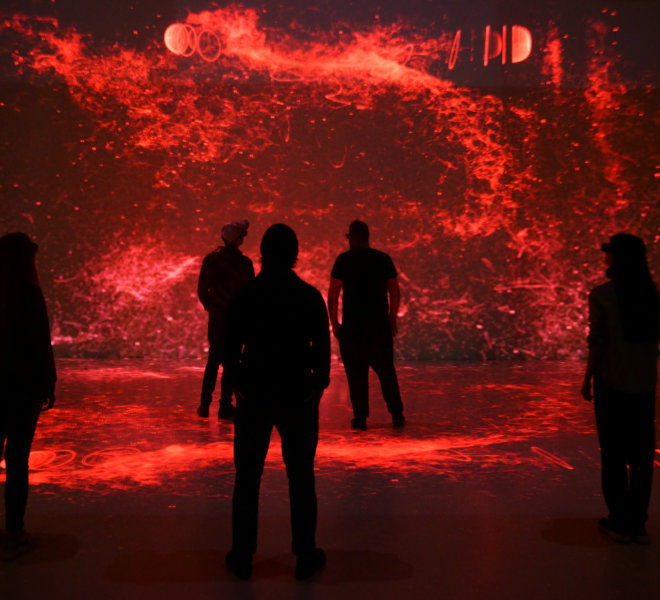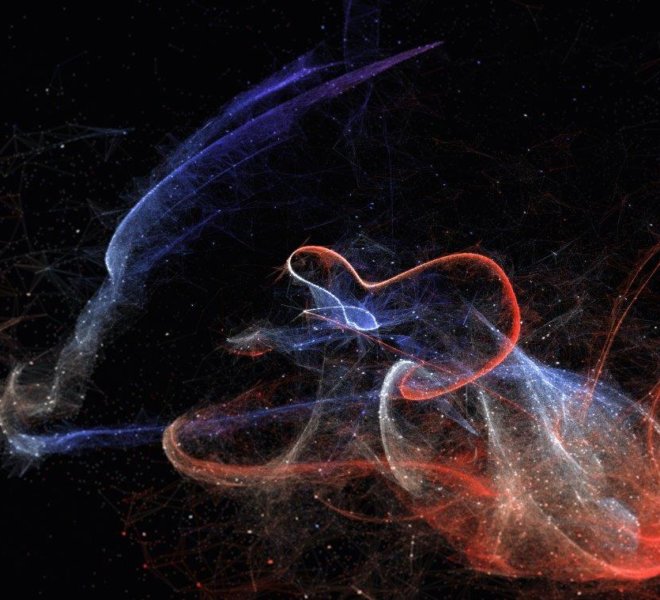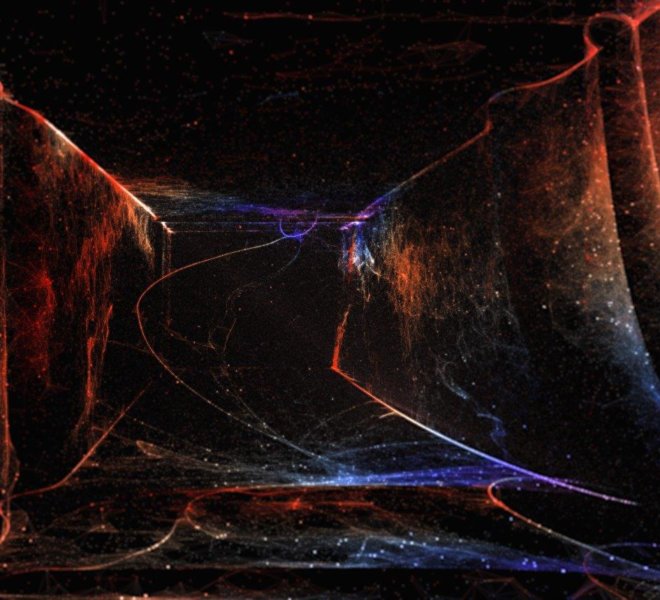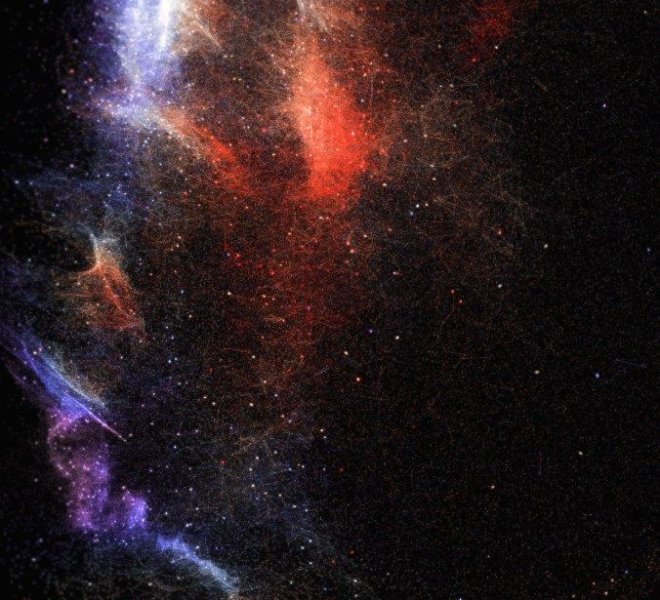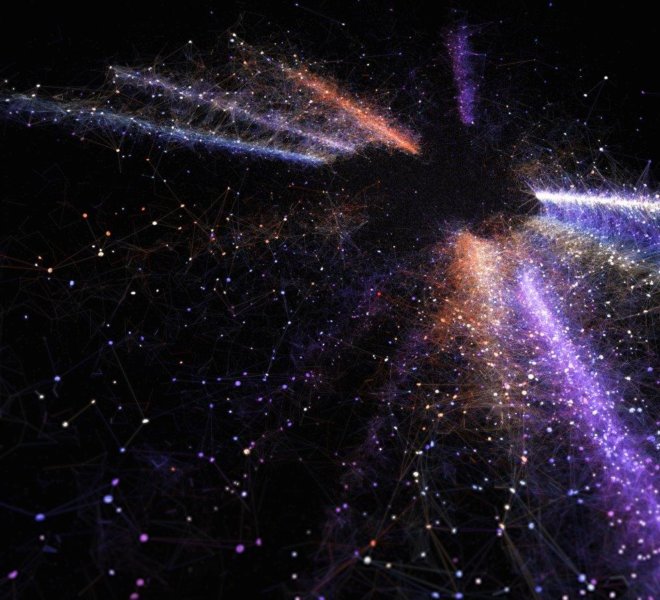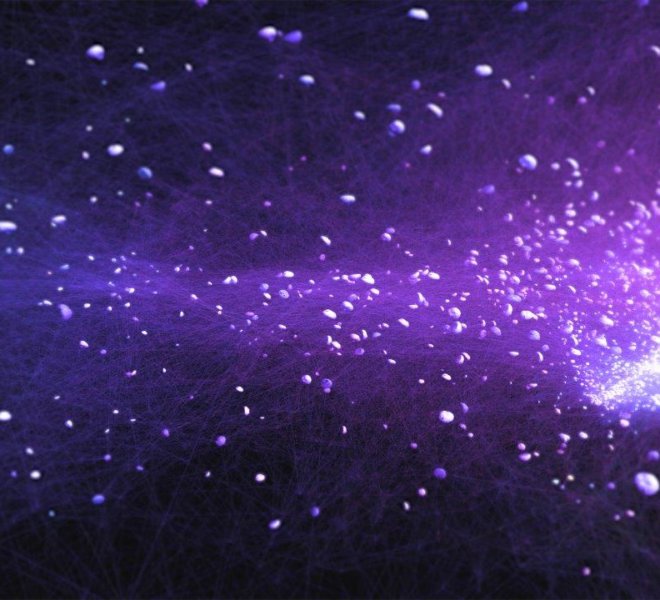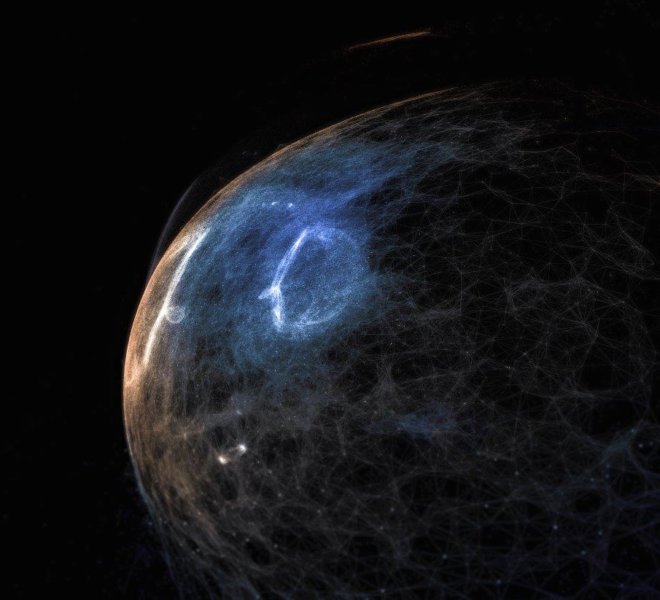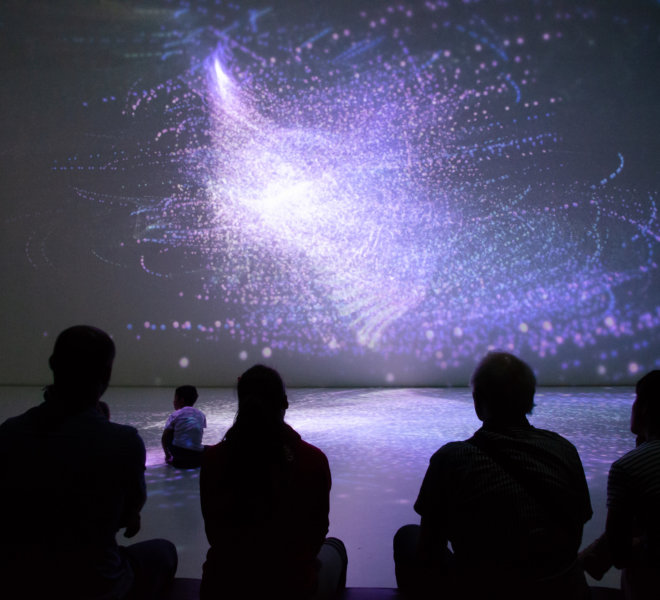
Singing Sand 2.0
February 2019
Introduction
Singing Sand 2.0 is a 3D stereoscopic audiovisual work in 8K resolution that was developed especially for Deep Space 8K in the frame of Immersify.
Story
Singing Sand was inspired by the sonic potential of abstract 3D computer graphics. The central element of the composition is a physics-based visual material whose movement is sonified in real-time. The piece explores what various particle fluctuations, tensions or shape-morphings sound like, what internal rhythms they create and how that affects our perception of the visuals in return.
Grains of sand resembling visual particles are sonified by mapping their individual velocities to various parameters of individual grains inside a custom-made granular synthesizer. At the same time the velocities determine the colours of the particles which together creates a spectrum of colours and sounds. This results in perceptually tight audiovisual bonds, which is a crucial element of this piece as the composition focuses on the gestural qualities of the audiovisual material.
The aim of the composition was to explore how such audiovisual material could function in a free audiovisual paradigm and also how to meaningfully force it onto the grid of harmony and metric rhythm. In the latter case the material created liquid grooves on top of dub-tech influenced fixed rhythmic elements, as well as ever changing spectral swirls that emerged from cross-breeding an originally noisy and non-stable sound source with pitch-based material.
The piece represents an attempt to compose from within an audiovisual paradigm where most of the compositional decisions came as a consequence of cross-fertilisation between both modalities.
Procedure
Version 2.0 is a 3D stereoscopic audiovisual work in 8K resolution that was developed especially for Deep Space 8K at Ars Electronica Center. This version features also various visual improvements that additionally enhance a sense of immersion.
Video
Singing Sand 2.0 – Excerpts

